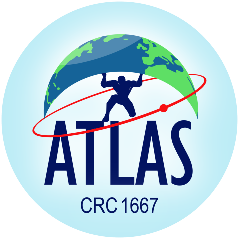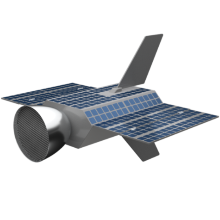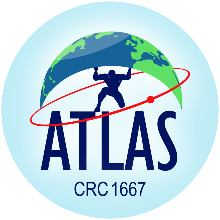The Collaborative Research Centre (CRC) 1667 “Advancing Technologies of Very Low Altitude Satellites (ATLAS)” addresses the fundamental scientific and engineering challenges of rendering Very Low Earth Orbit (VLEO, about 200 km to 450 km altitude) accessible. These orbits are particularly beneficial for indispensable satellite services of our modern knowledge, information and communication society. Additionally, access to VLEO offers the opportunity to operate satellites without exposure or contribution to the increasing contamination of traditional orbits with space debris.

The logo of the CRC 1667 ATLAS
The Challenge
Attaining sustained and economically viable VLEO flight is challenging due to the unique environmental properties of the lower thermosphere. This is most notably the significant, barely predictable, and dynamically changing drag, which leads to a rapid deterioration of any spacecraft’s orbit unless mitigated by a combination of active and passive techniques. Thus, the various advantages of VLEO, including its self-cleaning effect through the residual atmosphere, are to date offset by a prohibitively short operational lifetime. The leading research question of the CRC ATLAS is therefore: How can the lifetime of a satellite in VLEO be increased by at least one order of magnitude without the necessity of large amounts of fuel carried or resupplied continuously from Earth?
The Research Program
To answer this question, an advanced understanding of the interactions between rarefied high-energy flows and functional surfaces, innovations for collecting and utilising the residual atmosphere and novel concepts for designing and operating satellites in these conditions are essential. Within the CRC ATLAS, the basic principles and resulting technological concepts exploiting these findings and ultimately enabling VLEO utilisation will be investigated, established and verified. The scientific potentials of individual satellites, formations and constellations operating in this dynamic environment will be explored simultaneously, aligned to a multi-faceted VLEO reference mission scenario. The research programme is characterised by strong interdependencies and necessitates an intensive cooperation between various engineering disciplines that builds on the joint insight of processes at and across their interfaces to fully leverage synergies. The long-term goal is to provide the spaceflight community with the core elements in terms of methodology and technology to facilitate reliable studies and the development of concrete mission scenarios in VLEO.














